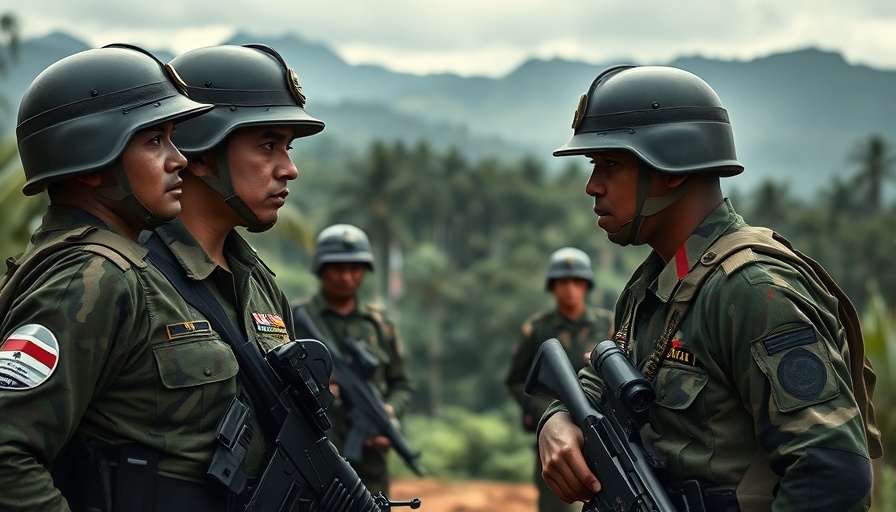
Understanding the Thailand-Cambodia Border Dispute
The ongoing border conflict between Thailand and Cambodia, ignited over territorial claims, highlights the complexities of regional geopolitics. The dispute’s focal point is around the Preah Vihear Temple, which carries significant historical and cultural significance for both nations. Established in the 9th century, this UNESCO World Heritage site symbolizes the rich cultural heritage prevalent in the region. The temple's contested nature serves as a catalyst for a series of diplomatic and military tensions that have arisen over the years.
The Historical Context of the Conflict
The roots of the Thailand-Cambodia border conflict trace back to colonial history, where the border was poorly defined, resulting in numerous misunderstandings and territorial disputes. The situation escalated in 2008 when the temple was granted UNESCO status, intensifying nationalistic sentiments in both countries. As a result, military presence increased along the border, leading to occasional armed clashes that not only claim lives but also ignite deep-seated tensions.
The Political Dimension: What’s at Stake?
The political ramifications of the conflict extend beyond mere territorial disputes; they shape the national identities and foreign policies of both countries. For Thailand, efforts to solidify its territorial claims play into broader nationalism, especially in light of internal political challenges. Conversely, Cambodia's stance is also intertwined with national pride, as it seeks to assert its sovereignty in the international arena. This has led to an intricate dance of diplomatic negotiations, often complicated by the involvement of external powers interested in the region’s stability.
Recent Developments and International Reactions
The United States, along with other international observers, has encouraged peaceful negotiations between the two nations. In light of this ongoing conflict, it is essential to monitor how it affects not only local stability but also broader Southeast Asian relations. Tensions over territorial rights are mirrored in various conflicts globally, illustrating a persistent pattern where cultural heritage sites become intertwined with nationalistic fervor.
Opportunities for Peaceful Resolutions: Engaging in Dialogue
Experts advocate for increased dialogue and collaboration between Thailand and Cambodia to address their disputes amicably. Constructive engagement could take many forms, including economic partnerships or tourism initiatives centered around the Preah Vihear Temple. Such initiatives could help to recast the conflict into opportunities for cooperation, allowing both nations to benefit from shared heritage rather than be divided by it.
Learning From Other Regional Conflicts
Much can be gleaned from other regions where similar disputes have surfaced. For instance, the resolution of the India-Pakistan conflict over Kashmir provides numerous insights into the power of backchannel negotiations and international mediation. By exploring various strategies employed in different contexts, both Thailand and Cambodia may identify new avenues for de-escalation and constructive dialogue.
What Lies Ahead: Predictions for the Region
The future of the Thailand-Cambodia border conflict depends greatly on both nations' political climates and the influence of external powers. Should economic pressures intensify or domestic unrest become prevalent, both governments might look towards deflecting attention towards external conflicts. Conversely, a commitment to collaboration and reconciliation could set a precedent for a more stable Southeast Asia.
Call to Action: Staying Informed
As this situation unfolds, it is vital for observers to maintain awareness of related developments. The increasing global focus on cooperation over conflict may provide fresh opportunities for resolution. For those interested in current events and the implications for regional security, following updates from credible news sources and engaging in discussions can foster a better understanding of these crucial dynamics.
 Add Element
Add Element  Add Row
Add Row 



Write A Comment